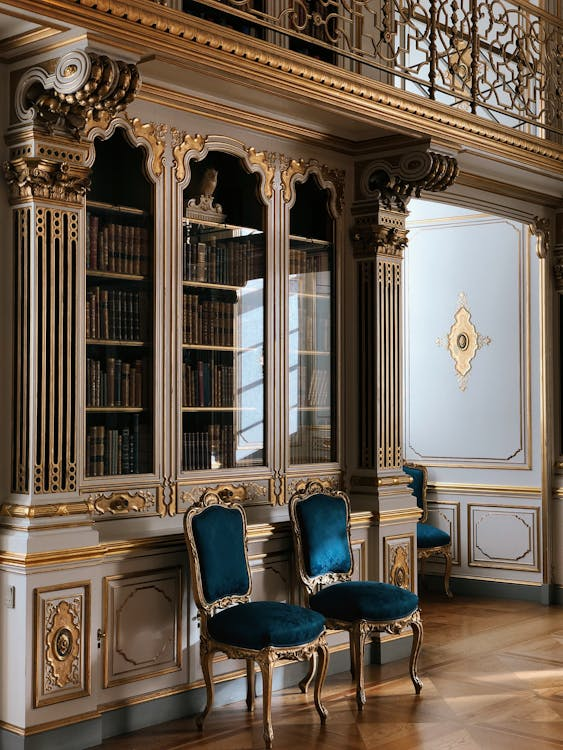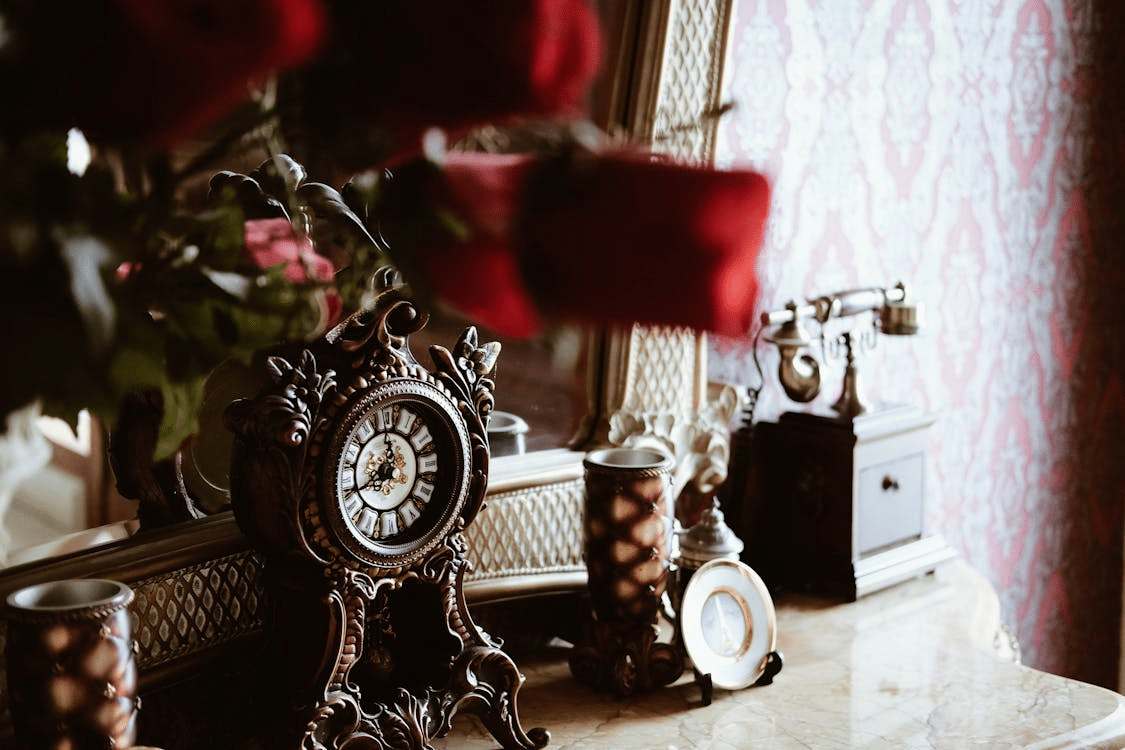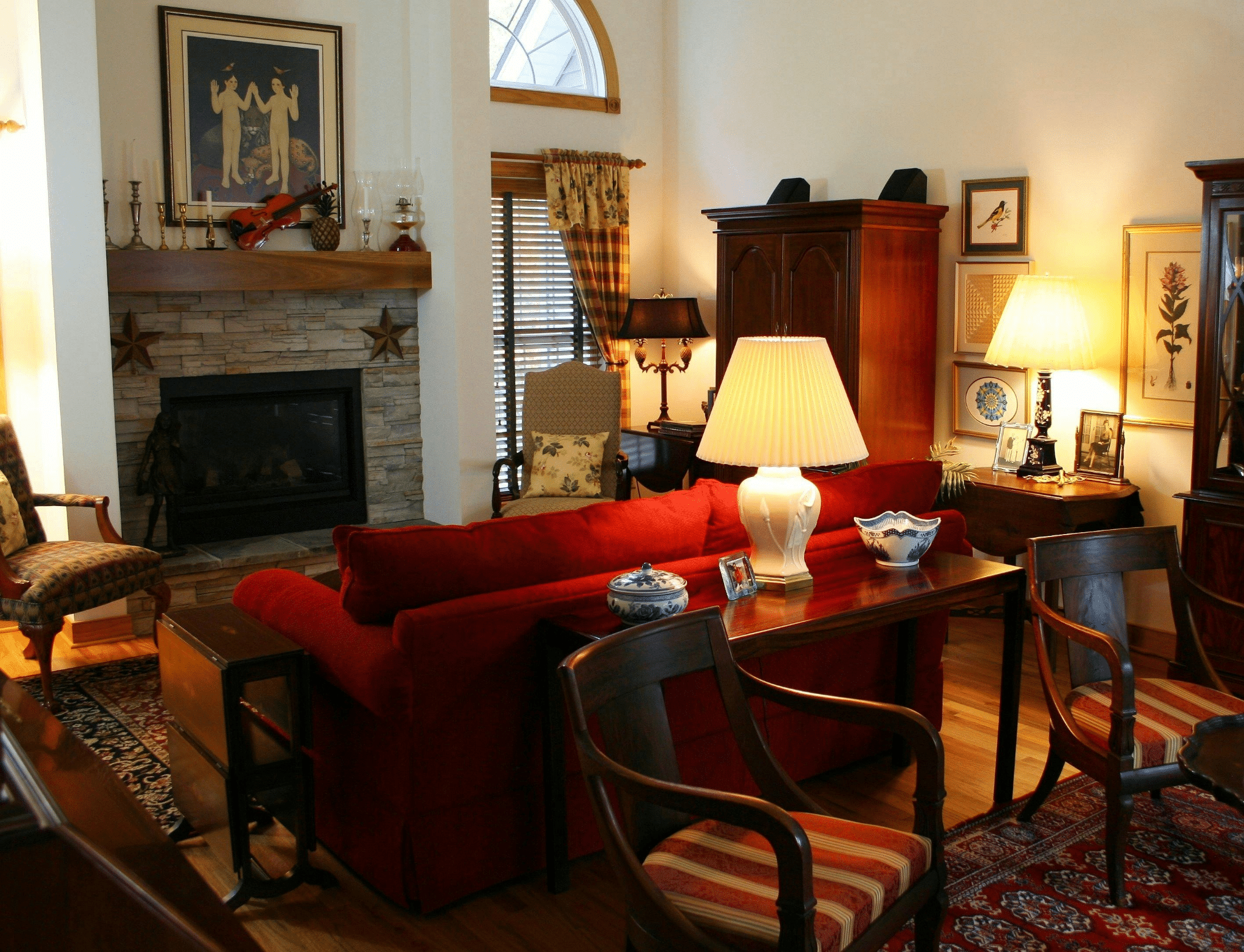Blending old and new furniture elements marries timelessness with contemporary minimalism. When executed properly, it results in thoughtfully arranged, lively, and profound individual environments.
However, inconsistent proportions, opposing textures, or discordant color combinations can make a space seem disordered instead of unified. This guide simplifies the process into four essential principles to assist you in manifesting the craft of curated contrast.
Anchor With Neutral Foundations and Accent with Bold Contrasts
The key to an effective furniture mix lies in a neutral base. Traditional furniture features curved wood, intricate details, and subdued hues like olive and burgundy. On the other hand, modern pieces favor clean lines and monochromatic palettes.
Start with off-white walls, gray or beige furniture, and natural jute rugs. This foundation softens bold pieces, letting contemporary and antique items coexist harmoniously. It also invites you to mix and match different elements effortlessly, ensuring that each style contributes to the overall balance.
A neutral base offers versatility. Once grounded, introduce contrast through strategic pairings. For example, place a contemporary sofa atop a vintage Persian rug or position a mid-century armchair beside a Baroque-style side table. In dining spaces, a minimalist matte black table can harmonize with Louis XVI-style chairs reupholstered in geometric fabric.
Let one era dominate each zone, such as a modern table anchoring traditional chairs, while accents spark dialogue between styles.
Even bold statements like neon abstract art above a Victorian fireplace feel intentional when anchored by neutrality. Harmony emerges from celebrating contrasts, creating a refined balance between old and new. The result is a space where tradition and modernity converge effortlessly, united by a cohesive foundation.
Play With Texture and Material Pairings

Photo by Alona on Pexels
Texture is the mixed-bag designer’s secret weapon. Classic furniture relies on luxurious materials like velvet, mahogany, or brass, whereas contemporary designs incorporate concrete, glass, or brushed steel. Combining these adds texture and depth of hand. A tufted emerald velvet Chesterfield sofa, for instance, is richly classic in ambiance, but can be revitalized by combining it with a glass coffee table and sculptural floor lamp in polished nickel. This interaction beckons to be touched, and the space is then made to feel edited and engaging.
Don’t be afraid to make unlikely material unions. A distressed farmhouse dining table reclaimed from woodwork perfectly with crystal clear acrylic chairs, combining earthy warmth with clean futurism. In the same vein, a glossy lacquered cabinet can balance out the raw sophistication of a worn antique mirror.
The objective is to achieve balance. If an item is heavy, such as a carved wood armoire, counter this by placing it next to something light, such as a matt white slimline console. This contrast between textures creates a sense of depth, but without clutter.
Balance Proportions for Visual Harmony
Scale is critical to combining styles seamlessly. Traditional furniture often features imposing, oversized pieces like overstuffed armchairs or four-poster beds, while modern designs emphasize sleek profiles and open space. By utilizing proportion to find balance, a room can avoid becoming overwhelmed. Harmony ensures no single piece dominates the visual conversation, with each getting its moment in the sun.
In living rooms, pair a large traditional sofa with low-profile modern armchairs to maintain open sightlines. Alternatively, position a sleek sectional opposite a refined Victorian settee for a striking contrast. In bedrooms, match a streamlined platform bed with an ornate headboard, using complementary decor like industrial pendant lights to bridge styles. These deliberate combinations create a layered appearance that appears considered and coherent.
When combining furniture, leave some breathing room around show-stoppers, such as a Baroque console, and let them stand out. Use modern art or mirrors to draw the eye upward, balancing vertical and horizontal lines. Visual harmony is achieved when contrasting elements feel connected through intentional spacing and alignment. The result is a dynamic yet peaceful space where every piece has room to breathe and contribute to the overall design.
Integrate Accessories and Personal Details for an Artful Touch

Artwork also effortlessly bridges eras. A vintage oil painting in an ornate frame can hover above a sleek credenza, marrying past and present. Similarly, throw pillows in modern geometric patterns but crafted from traditional linen soften a contemporary sofa while nodding to heritage. Lighting also plays a pivotal role. A crystal chandelier casts warmth over minimalist furnishings, or a sculptural pendant light modernizes a carved dining table.
Vintage collectibles, like globes, stacks of antique books, or a brass object d’art, infuse history into modern spaces. They tell stories, grounding the room in history. Edit thoroughly, as each accessory should feel significant, whether adding contrast or continuity. A single Art Deco vase on a console or a gallery wall mixing abstract art and sepia-toned family photos tells a story of artistic and personal evolution.
Endnote
Combining old and new furniture is not about set rules; it’s about gut and experimentation. By anchoring with neutrals, introducing texture, and respecting scale, you’ll be able to make spaces that are both contemporary and classic. The refined blending of personal touches continues to draw the narrative together, with each piece expressing your own individual taste. Remember that most engaging interiors tell a story: a mid-century lamp can reference your retro obsessions, while a heirloom quilt adds history and warmth. Don’t be afraid to break conventions, but always aim for harmony.

